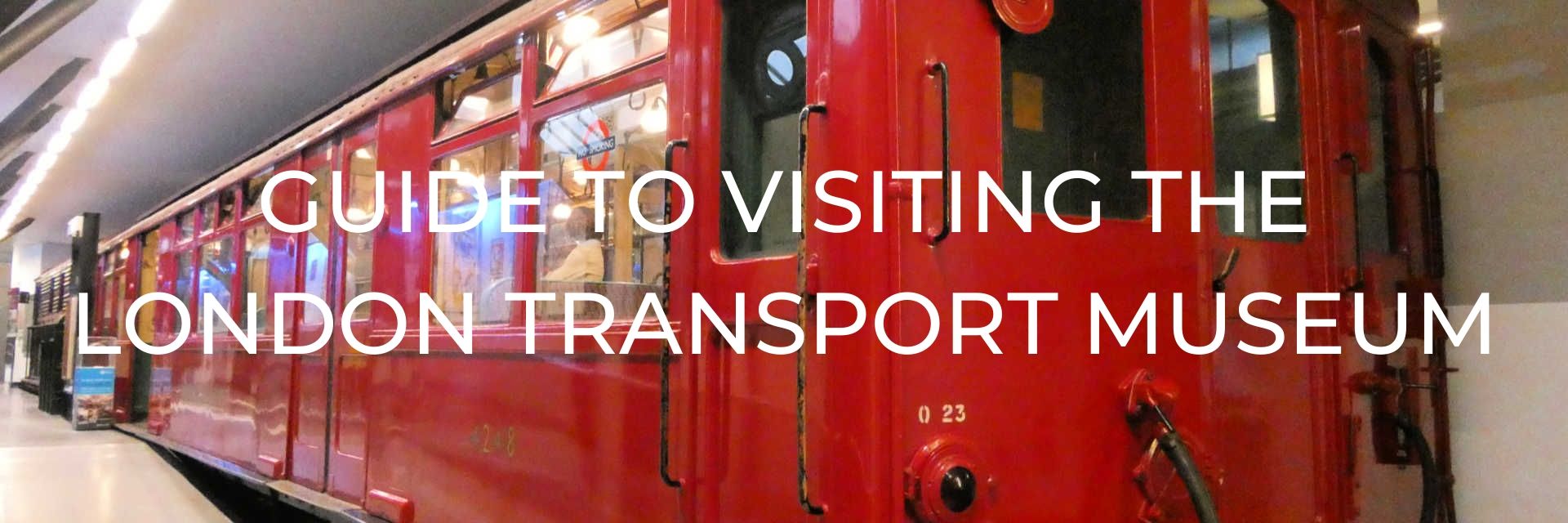
The London Transport Museum tells some of the stories of the 150-year plus development of public transport in London. From the first public transport in the early 19th century and the world’s first underground trains through to the integrated transport of modern London controlled by Transport for London.
Want to save this for later? Click the Pinterest button on the left for a pinnable image!
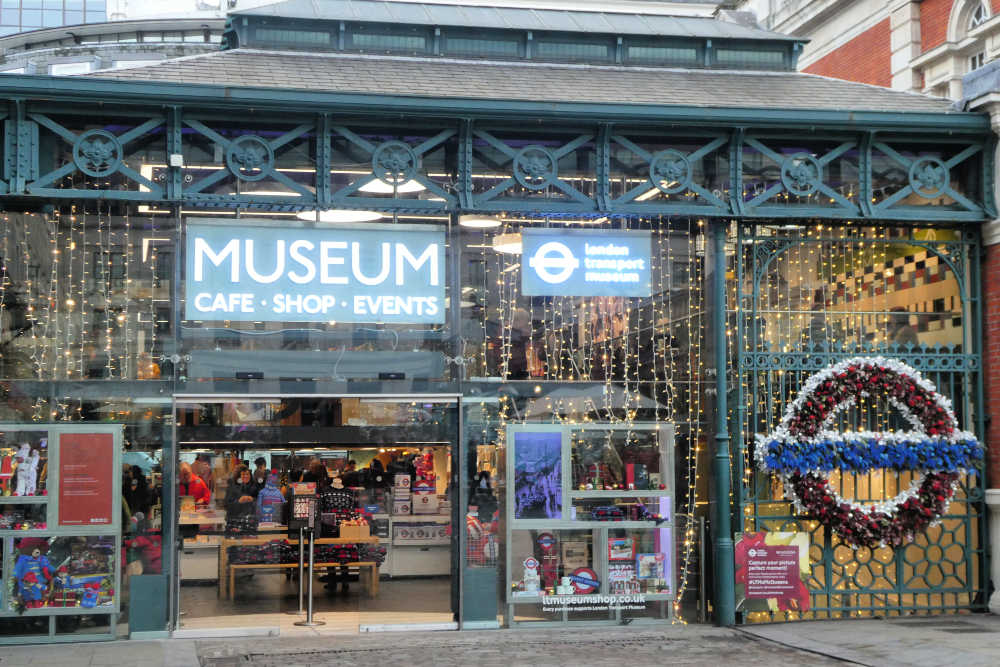
This post may contain affiliate links. Please read our full disclosure policy here.
The London Transport Museum’s origins started in the early 20th-century when retired buses were preserved by the London General Omnibus Company. It expanded to include the railways and other transport vehicles and memorabilia until the present day. Its modern-day remit is to cover all aspects of transport within London.
HIGHLIGHTS OF THE LONDON TRANSPORT MUSEUM
The museum is housed in a former fruit and flower market and hosts buses, trolleybuses and railway carriages and locomotives from across the history of transport in London. It packs in a lot more than you might expect given the relatively limited space available.
There isn’t a guided route through the museum, so be sure to check the map to be certain you don’t miss anything you really want to see.
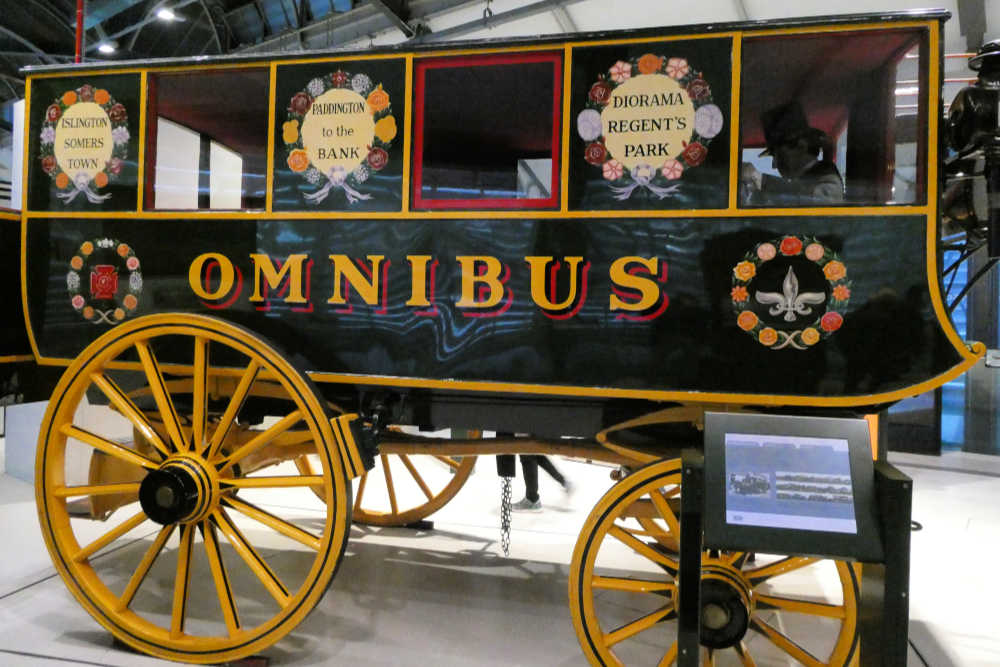
VICTORIAN TRANSPORT
The origins of public transport in London are covered on the second level of the museum. Here you can see a sedan chair as well as horse-drawn buses and trams that offered those living in London their first chances to ride on public transport.
While the railways brought people to the city, their terminuses were located at what was then the edge of the city. This left people predominantly walking from the station to their destination and using ferrymen to cross the River Thames if required. London’s first ‘hail and ride’ service was launched by George Shillibeer in 1829, but it wasn’t until the launch of horse-drawn trams in 1870 that working-class Londoners could afford to use public transport.
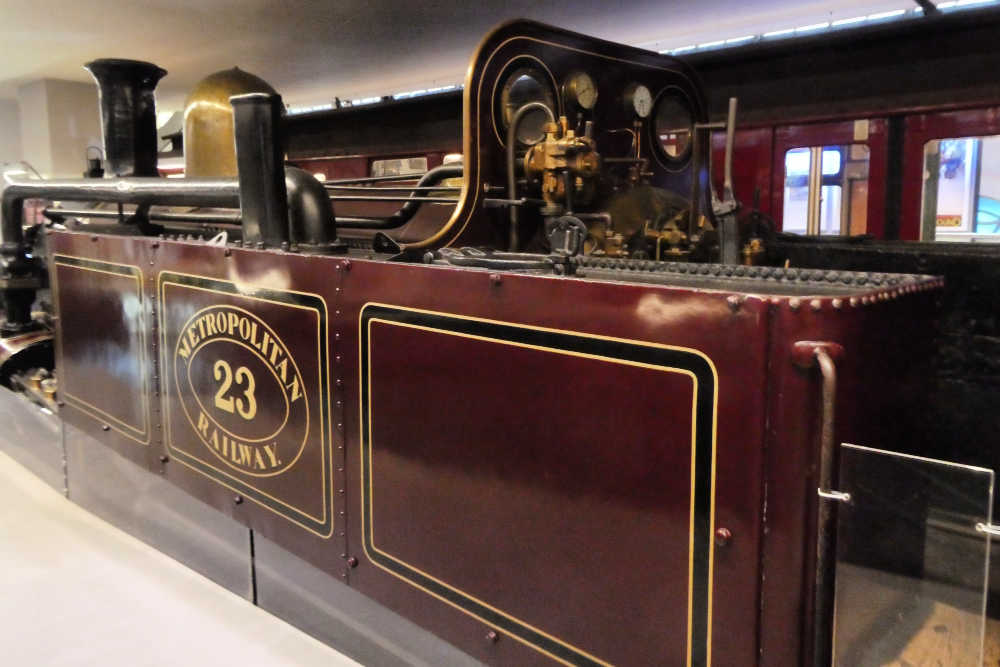
THE WORLD’S FIRST UNDERGROUND RAILWAY
With the railways bringing people into the city, the congestion of those people trying to their destinations was becoming a major problem. The Metropolitan Railway linked three of these terminuses together underground by digging a huge trench down the centre of the street. The railway was constructed inside the trench and then roofed over to allow the street to be restored. This method, known as cut and cover offered a solution to getting people off the street and onto underground railways but was hugely disruptive during construction.
The first underground railway in the world opened in 1863 between Paddington and Farringdon. It was followed a few years later by the District Line and the two railways were linked to form the Circle Line. Despite its name, the circle line is no longer a circle, more a lasso and visits Paddington and Edgeware Road twice as it travels from one end to the other.
The other surprising thing about the new railway was that it was powered by steam! You can see a steam engine that was used on the underground in the museum and can only imagine how dirty it must have been before the railway was switched over to electric power.
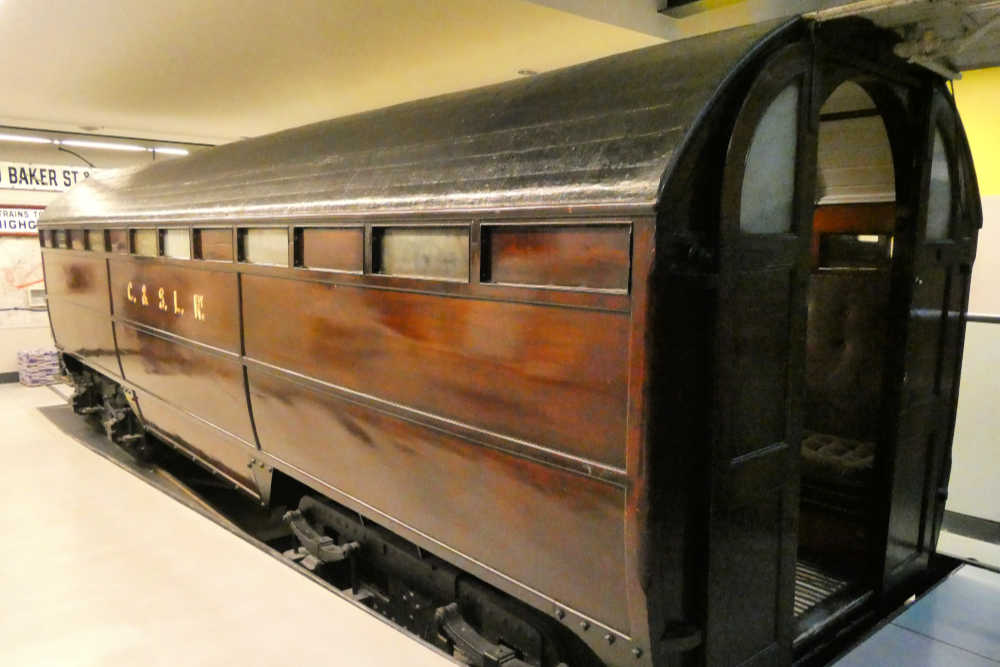
THE TUBE
The deep lines that give the entire underground system its nickname were only possible once the system could be powered electrically and engineers could tunnel safely through London’s clay. Safer tunnelling was achieved through the use of the Greathead Shield which meant there was no need to dig a trench for the entire route.
The first tube line was also the first electric railway in the world and operated between Stockwell and King William Street. It opened in 1890 with passengers travelling in padded cell coaches that look quite claustrophobic compared with today’s trains. You can also see a life-size recreation of the tunnelling shield that was used to protect the workers as they dug out the tunnel to the first tube.
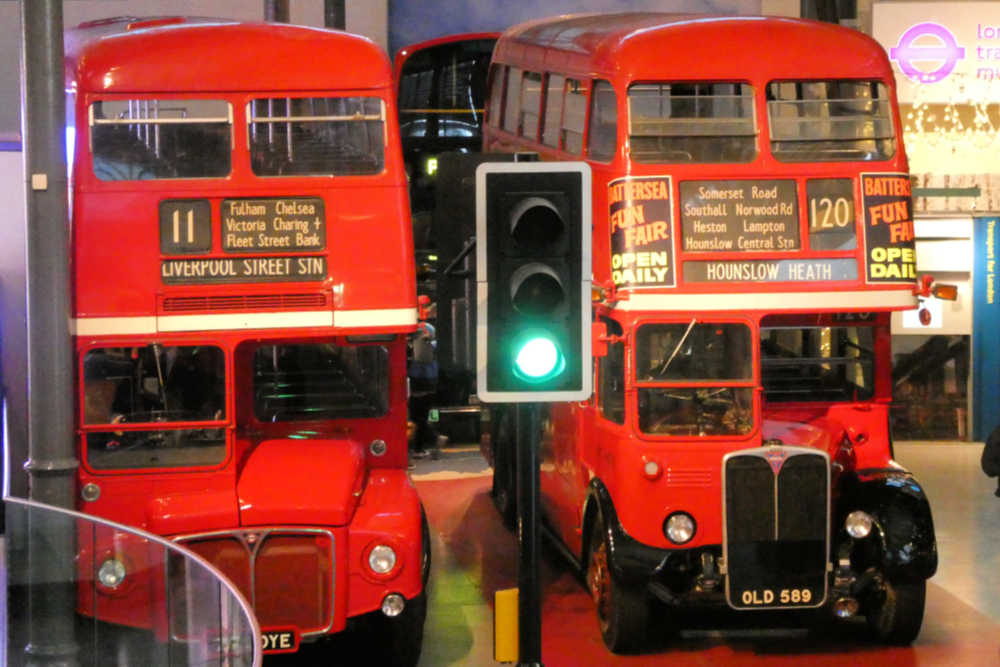
SURFACE TRANSPORT
As well as the horse-drawn buses and trams displayed in the Victorian section, the museum also houses several more modern buses from London’s transport history.
After the trams which exploded across London in the years before World War I came independently powered buses. Being open-topped for the cheapest fares left those paying the least exposed to the elements no matter what the weather. Improvements in comfort came from the introduction of inflated tyres and putting roofs on the top deck.
Trolleybuses which used the same power lines as the trams were introduced around 1930 and a six-wheel example of a trolley bus is on display in the museum. Whilst no longer limited by rails, these buses could still only deviate so far from the power lines and independently powered buses eventually won out.
The most iconic London Bus is surely the Routemaster and a fine example of one and its predecessor take pride of place in the museum. To anyone old enough, the memory of jumping on and off these buses, not necessarily when they were at a bus stop will no doubt bring back memories.
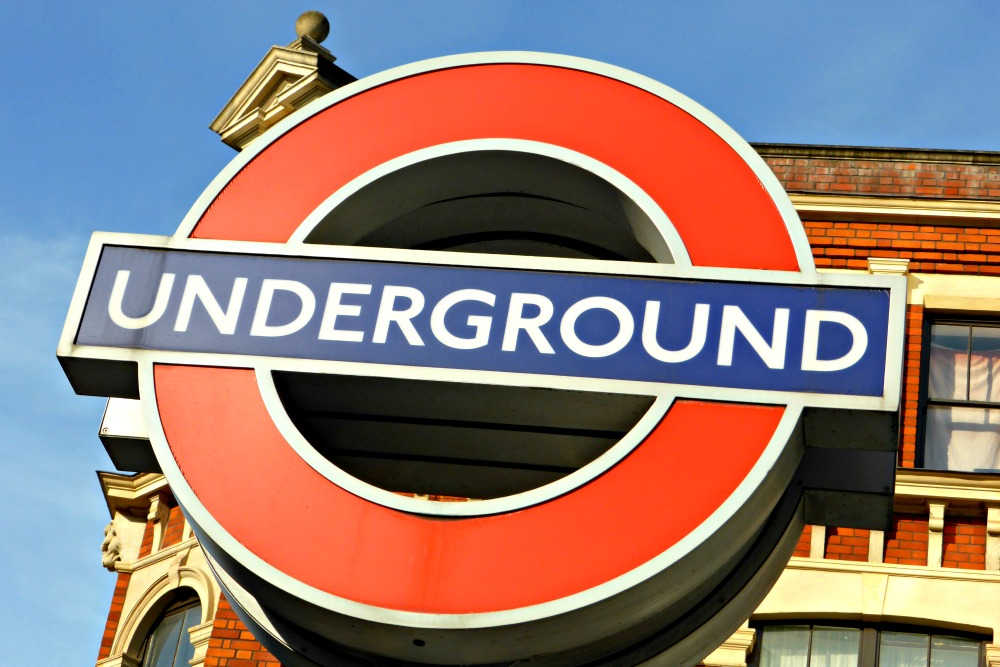
DESIGN ICONS
After London Transport was created in 1933 a push was made to standardise signage and ensure that good design was implemented across the network. Perhaps the three most iconic results of this push are the famous roundel, the font used across the network and the London Tube Map. All of these are celebrated within the Museum.
From an original design in 1905, the roundel has undergone many revisions through the years but retains the basic design of a red circle and a blue bar. The roundel is now used throughout London with different modes of transport adopting different colour combinations.
The font used on London Transport was first developed by Edward Johnston and has undergone two revisions during its lifetime. The last revision restored the typeface closer to the original and introduced symbols such as the hash character which has gained importance with its use on social media.
Before Harry Beck invented the basis of the map that is still used in London (and on many metro systems throughout the world) stations were laid out geographically. Though accurate, this didn’t help people work out routes as stations could be close together and hard to interpret. Harry Beck’s idea was to draw the map similar to an electrical schematic with disregard for the distances between stations or their relationship to each other. This can be seen most clearly by looking at Wimbledon Station on the District Line and South Wimbledon on the Northern Line. In real life, they are less than a mile apart.
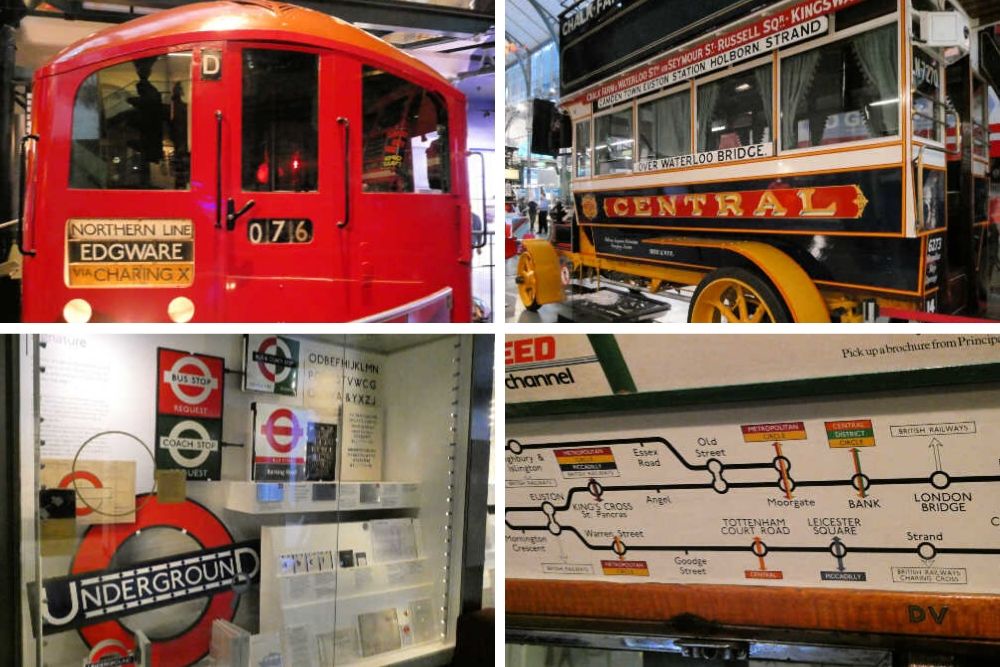
PLAN YOUR VISIT TO THE LONDON TRANSPORT MUSEUM
Information last updated December 2019
HOW TO GET THERE
The London Transport Museum can be found at Covent Garden Piazza (south-east corner) London WC2E 7BB.
The nearest tube stations are Covent Garden (Piccadilly Line), Charing Cross (Northern and Bakerloo Lines and southeastern National Rail), Temple (Circle and District Lines), and Leicester Square (Piccadilly and Northern Lines). All stations are less than 10 minutes walk to the London Transport Museum.
Parking is available less than five minutes walk away at Q-Park Covent Garden.
HELPFUL LINK:
- If you need an app that will navigate you around whether walking, driving or using public transport and even works offline then click for a guide about how to use Here WeGo.
OPENING HOURS
Opening hours are 1000-1800 every day except for the 24th to 26th December.
As all of the attraction is indoors, any time of year is a good time to visit and it could be the perfect place to visit on a rainy or cold day. We would recommend you allow at least two hours to fully explore the museum.
HOW TO BUY TICKETS & SAVE MONEY ON ADMISSION
Basic admission prices are £18 for adults, free for 17 and under and £17 for over senior citizens, students and visitors receiving state benefits. One carer per disabled visitor can visit for free. You can save £1.50 per ticket by booking online in advance. British military personnel can visit for £13 for themselves and their family by presenting their military ID on the door. TFL staff can visit the museum for free.
The London Transport Museum is included in the London Pass which can offer savings depending on what else you are doing whilst you are in London.
If you are travelling by train on the National Rail you may also be eligible for great savings with the 2 for 1 London offer by Days Out Guide. This offer is not available all the time but it is well worth a quick look on their website to see if it’s available for when you’d like to visit.
ACCESSIBILITY
All areas of the museum offer step-free access. Access to locomotives and historic buses is not step-free, the more modern tube trains are accessible as the floor is raised flush with the entrance to the carriage.
For full accessibility details please visit the London Transport Museum Accessibility page.
IS THE LONDON TRANSPORT MUSEUM WORTH THE VISIT?
For anyone interested in the history of transport in London, or those you just want to step onto a Routemaster bus, or tube train that they’ll remember from their childhood, the London Transport Museum is an excellent place to visit. The museum has road transport equipment going back to horse-drawn buses, trolley-buses and the classic Routemaster. For trains, there are several old underground trains as well as a steam locomotive that pulled trains underground in the early days of the network. This is all surrounded by many other artefacts that document the history of transport in London.
See what others think of this attraction on Trip Advisor.
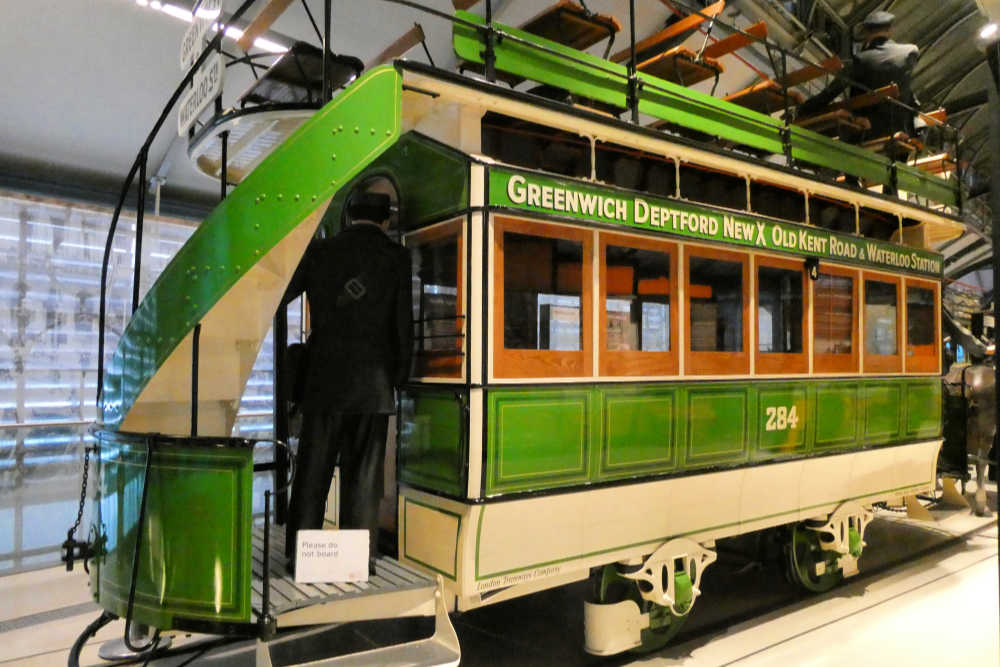
ADD TO YOUR LONDON ITINERARY
“When a man is tired of London, he is tired of life” said Samuel Johnson, so it’s no surprise that there are a plethora of things to do in the UK’s capital city. Here are a few choice selections to whet your appetite.
- Enjoy the unique shops and market stalls of Covent Garden; watch the street performers and soak up the atmosphere of this vibrant part of London.
- The British Museum is one of the world’s premier collections of global antiquities including such exhibits as the Rosetta Stone and the Elgin Marbles.
- If you want to buy something silver the London Silver Vaults are the world’s largest retail area for silver in the world with over 30 specialist shops.
- Explore the Churchill War Rooms, the actual rooms where Churchill and his chiefs of staff formulated strategy for the defence of the UK during World War II.
- Take a ride on the London Eye and take in the breathtaking views as the Eye takes you 130m above London.
RELATED ATTRACTIONS IN THE UK
As the birthplace of the railways, the UK has a rich variety of railway related attractions. Here are a few you might want to consider visiting:
- Learn about the history of the railways, visit iconic locomotives and explore the luxury of Royal Rail Travel at the National Rail Museum.
- Let the train take the strain to the top of Wales’ highest peak on the Snowdon Mountain Railway. The narrow-gauge rack and pinion railway will take you up over 1,000 m (3300 ft) in just 4.7 miles (7.5 km).
- Ride Mail Rail, the post offices tiny underground railway that was built just to carry the post. Today you can ride it yourself and learn about how and why it was constructed.
- Take a ride on one of many steam railways around the country and see steam engines in action. You can find your nearest railway on the Heritage Railways website. One of our favourites is the Kent and East Sussex where you can take a steam train to Bodiam Castle!
- Modern railway lines can still be a great way to see the country. For example, the Far North Line from Inverness to Thurso and Wick is the most northerly line in the UK and even without the allure of steam, little detracts from the wild and beautiful countryside this railway travels through.
Want to save this for later? Click the Pinterest button on the left for a pinnable image!
RESOURCES | PLAN YOUR TRIP TO LONDON
To book flights, rental cars, accommodations, and activities for your trip, please check out our recommended travel providers, favourite apps and websites.
These are a few tours that we would recommend for your trip to London.
Some of the links in the post above are affiliate links. This means if you click on the link and purchase the item, we will receive an affiliate commission but this does not affect the price to you. Please read our full disclosure policy here.
